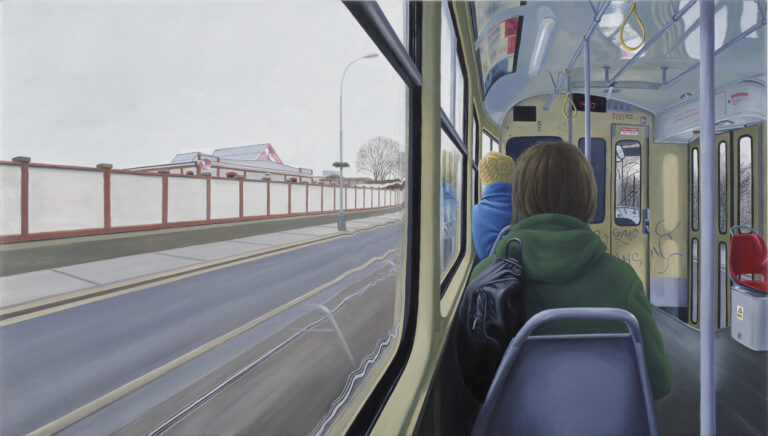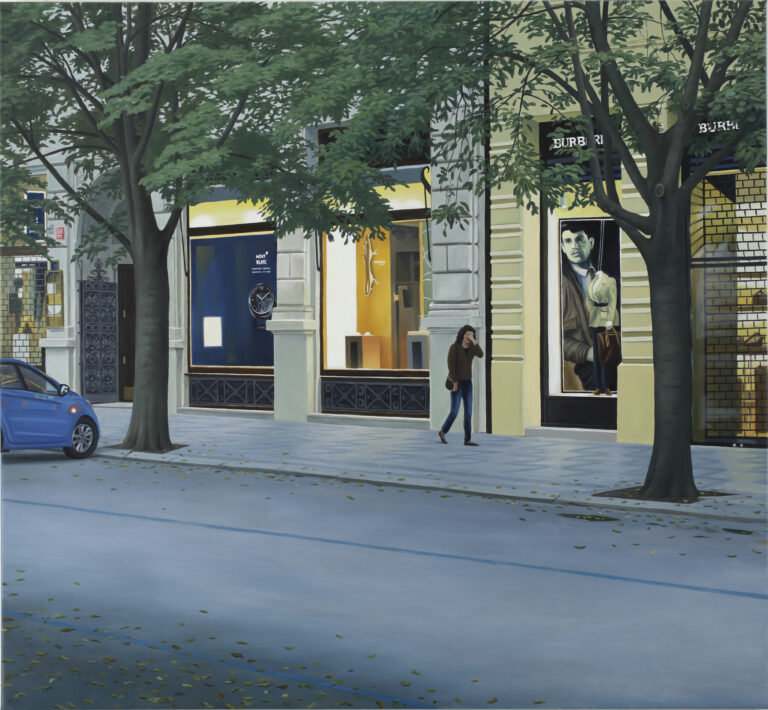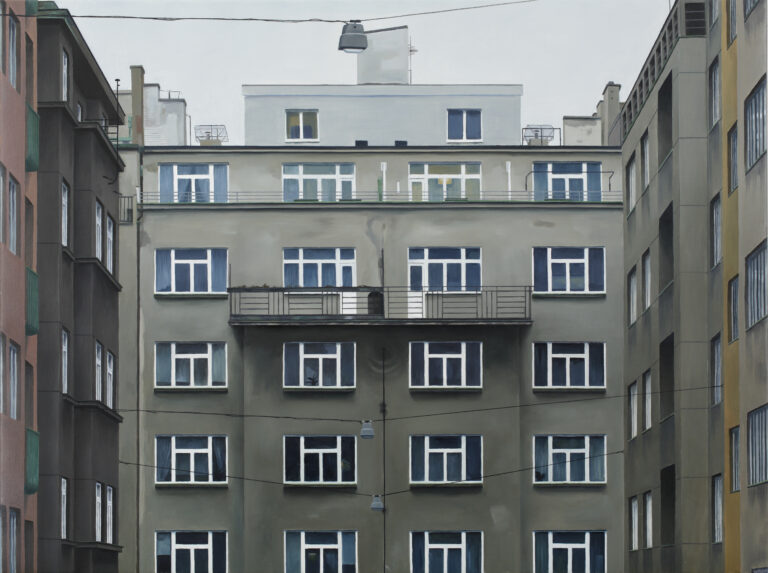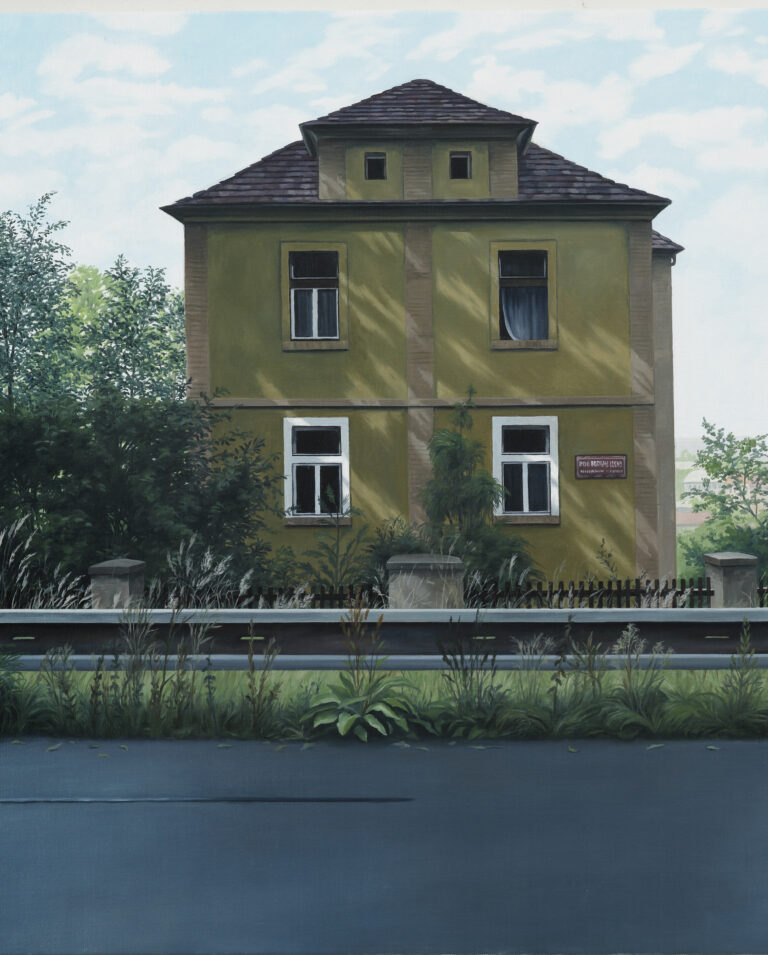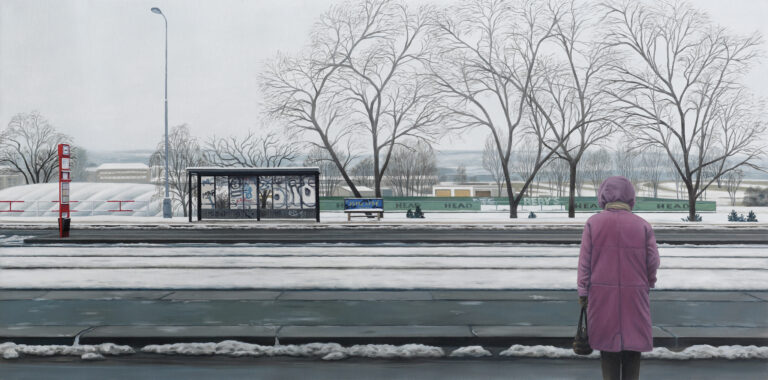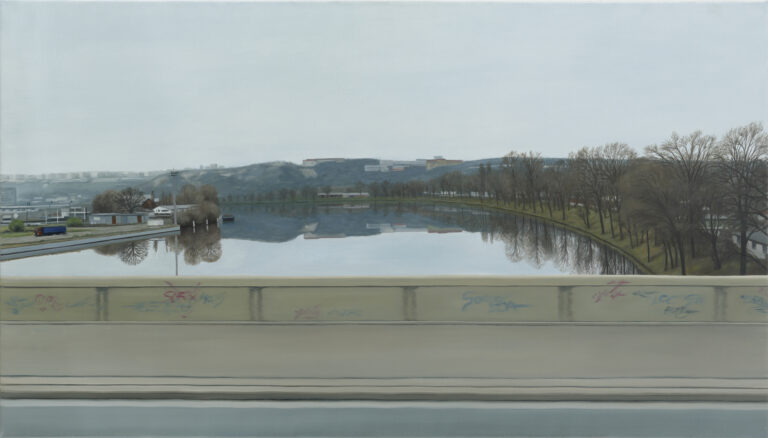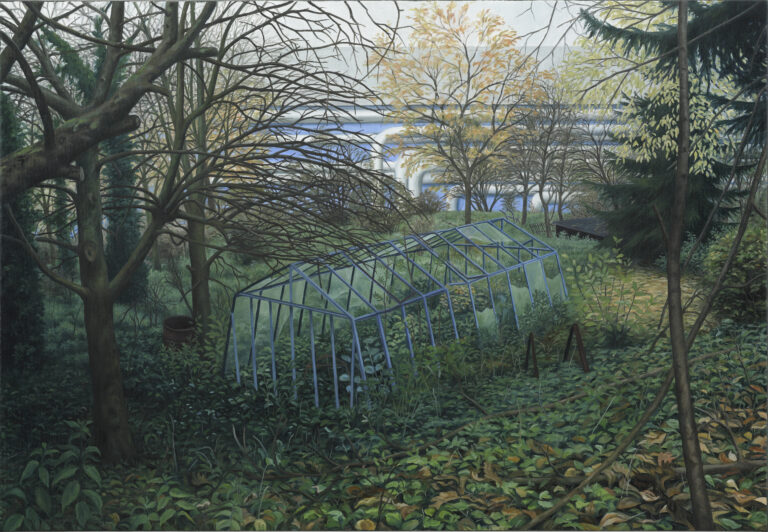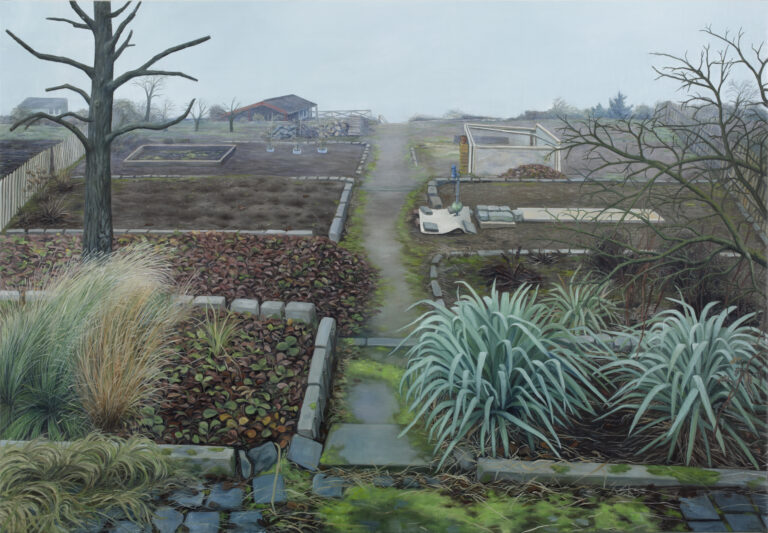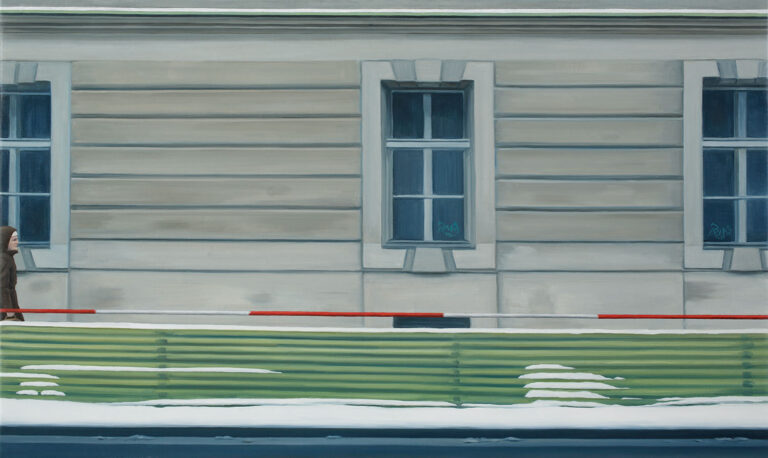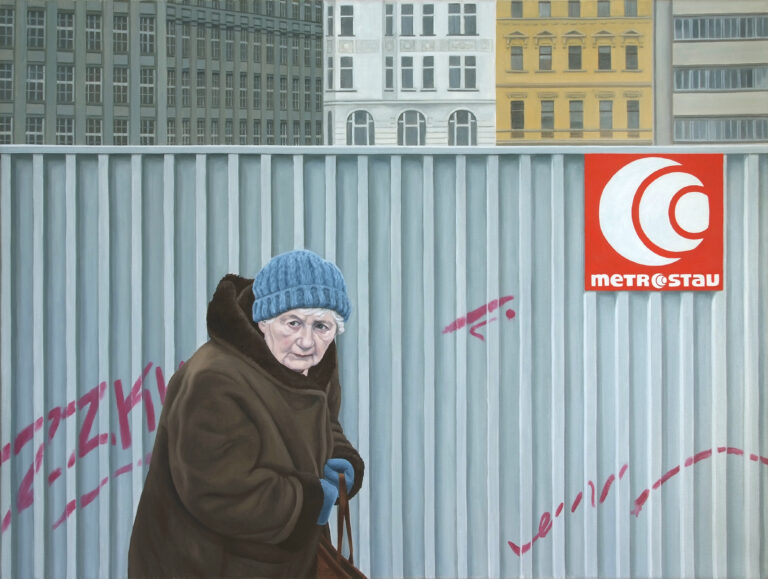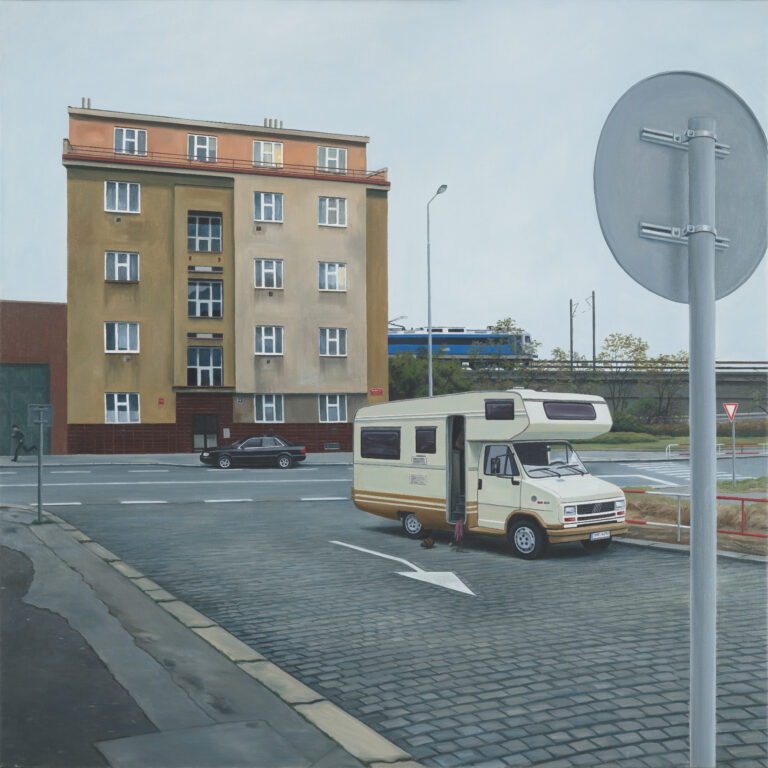PRAGUE
2012–2021
Prague has been a long-standing theme for me, but I only started painting it “again” around 2012, when I had somehow stopped being angry at the architecture I was forced to study. In that painting, there was more of a search for lost time than an attempt to capture the city’s appearance. It felt like tracking my own childhood — maybe it’s a kind of instinct, to bear witness to the time one lives in. I’ve lived in Prague my whole life, and I suppose I feel sorry that it’s changing so quickly, even if often for the better — I want to “preserve” it in some way. I’m tracing its appearance from the 1970s or 80s. And since “the devil is in the detail,” it’s often exactly the detail that matters most to me.
I think children perceive the city they grow up in on a subliminal level — they don’t think about it, it just becomes a part of them. The ground level of the city is especially important to them: sidewalks, staircases, ditches, chipped walls, little railings, drains, small parks, and benches — these are the stages for their games, adventures, dramas, and discoveries. That’s how it was for us, at least. Maybe I’m painting Prague more through the eyes of a child than of an adult. All these small urban details are disappearing today; things are being simplified, cleaned up, open spaces are vanishing. And it’s precisely those overlooked, insignificant urban corners that carry strong emotional charges and memories. Their shapes hold those memories, and when we suddenly see the shape of an old door handle, a mailbox, or a phone booth, clusters of memories leap out at us.
Later, I also began focusing on interiors — waiting rooms, dance halls, tax offices, and similar places — and even there, I still found many spaces where the familiar atmosphere of the oppressive normalization era lingered, an atmosphere that should not be forgotten.
